A Yen for Kyoto
By Susan Farewell
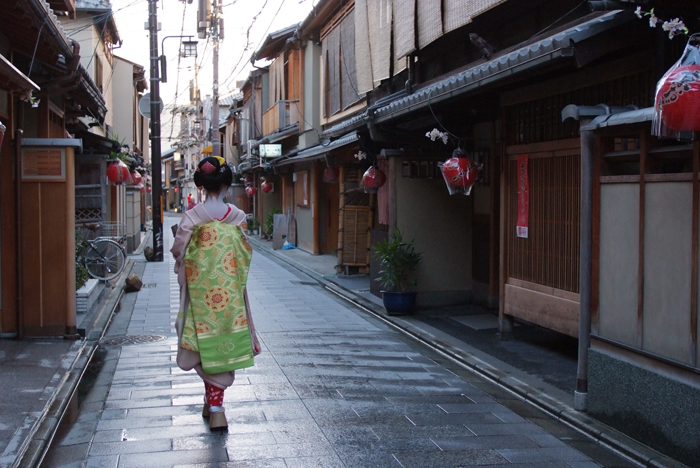
Photo courtesy of Kyoto Convention Bureau
Why do I love Kyoto? It’s hard not to. Here are just 10 reasons why you too will fall under its sway.
Cuisine with UNESCO Status
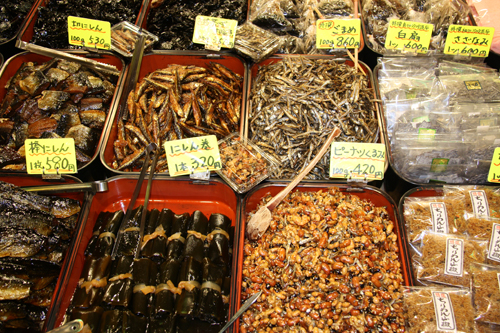
Photo by Susan Farewell
You know that question, “If you could eat only one type of cuisine for the rest of your life, which would it be?” For me, there’s no delay in answering: Japanese. Fortunately, it will always be an option because Japan’s cuisine, known as washoku, is on the United Nation’s Intangible Cultural Heritage list -- a protected UNESCO cuisine.
You can't help but come to have great respect for the cuisine and the ingredients used by spending an hour walking around Kyoto's Nishiki food market. The little stalls and shops are filled with unrecognizable fruits, vegetables, seafood and pickled everything. Over the course of your stay, you'll inevitably find them served in restaurants, many prepared by using centuries-old cooking techniques.
Birthplace of Kaiseki
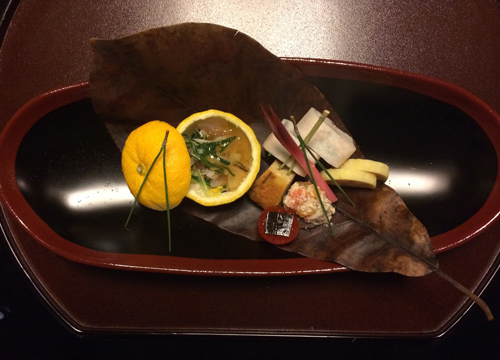
Photo by Bodaiju Travel & Arts
Kyoto is where the country’s Kaiseki cuisine was born. Kaiseki is a series of small courses, artfully arranged and served in carefully planned succession. The multi-course meal grew out of the Japanese Tea Ceremony, when small dishes were created to ward off hunger at get-togethers by Zen Monks in the 1500s and has since become extremely sophisticated. Pictured here is a Kaiseki dish from Yoshikawa in downtown Kyoto, beautifully presented on an autumn biwa leaf. Experiencing a Kaiseki meal in this city is unquestionably one of the most memorable meals you can have.
Mad About Matcha
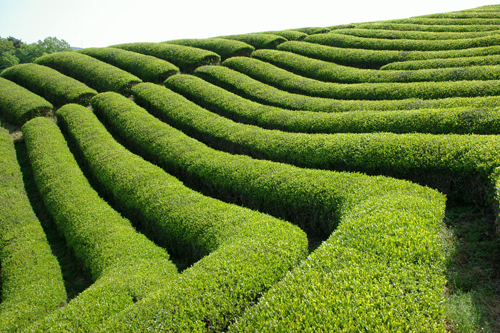
Photo courtesy of Kyoto Convention Bureau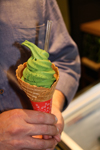
One week in this city and you can’t help but become intrigued--if not obsessed--with matcha. Matcha is the fine powder that is green tea leaves ground down, and is known to have more antioxidants than regular green tea. Experiencing the Japanese Tea Ceremony is a must when visiting Kyoto.
Beyond the tea itself, there’s green tea ice cream, green tea lattes, green tea chocolates, even green tea Kit Kats.
The tea leaves are from the lush tea gardens of nearby Uji (Ujitawara), considered the birthplace of tea in Japan.
Geisha in Gion
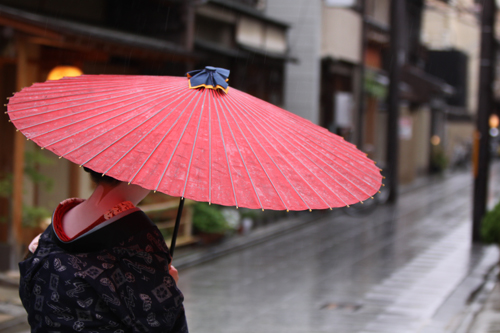
Photo courtesy of Windows to Japan
Wander the cobbled streets of Kyoto’s historic Gion district in the early evening and you will spot packs of tourists rushing to get pictures of geisha, as they make their way to work.
Indeed, when you first spot a geisha (in Kyoto dialect, geiko) or a maiko (apprentice geisha), you can’t help but be intrigued. In their full garb and makeup, to Westerners they are about as exotic looking as you get.
While you can find geisha throughout the country, Kyoto is where the geisha culture originated. They are professional entertainers hired to dance and interact with guests at dinners and other occasions.
Taxis are Conversation Pieces
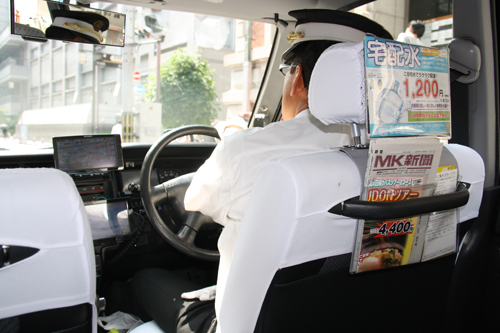
Photos by Susan Farewell

I don’t normally ask to take pictures of taxi drivers, but I couldn’t help myself in Kyoto.
From head to toe, the drivers here are impeccably dressed in uniforms complete with hats, white gloves and highly polished shoes. Their cars are spic and span inside and out with white linen and lace doilies covering seat backs and arm rests.
Whatever you do, never open a taxi door on your own. Unique to Japan are automatic taxis doors which swing open and close automatically.
How These Gardens Grow
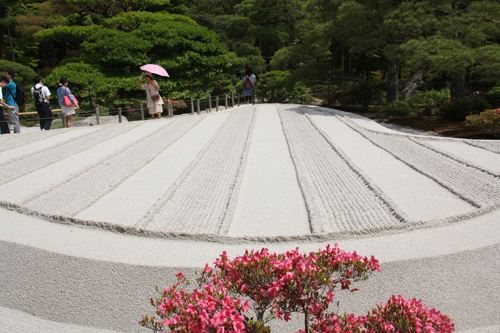
Photo courtesy of Windows to Japan
Whether a Zen garden with rocks carefully placed on large expanses of gravel, a meticulously raked area of sand, a patchwork of mosses in a wooded area or a leafy green and multi-blossomed arboretum-like setting--- Japanese gardens are compelling little worlds of serenity and peace. Pictured here is the sand garden Ginshaden in Ginkaku-ji (The Silver Pavilion), which is a “dry garden” that covers 1.75 acres.
What a Flower Show!
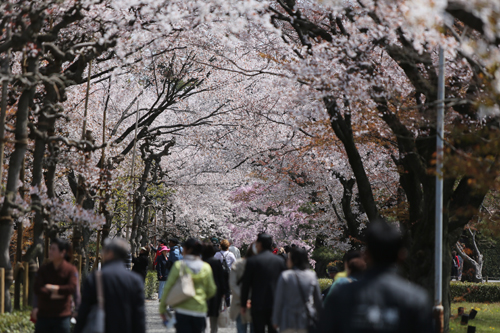
Photo courtesy of Windows to Japan
In the spring, Kyoto is festooned with cherry blossoms and it seems everyone is outside reveling in the glory of it all. Hanami is the Japanese tradition of admiring the beauty of the transient blossoms which are normally at their peak towards the end of March or the beginning of April in Kyoto.
Seen One Temple; Haven’t Seen Them All
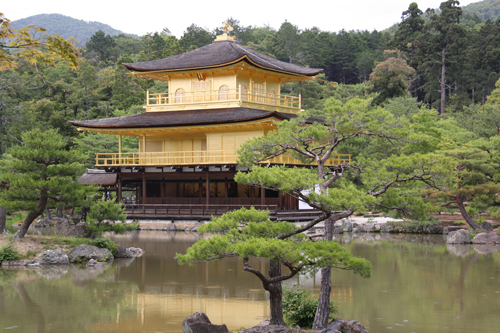
Photo by Susan Farewell
As the former capital of Japan and emperor’s residence for more than a thousand years, Kyoto is densely historic with temples and shrines everywhere. The most iconic of them all is Kinkaku-ji, a Zen Buddhist temple famed for its extensive gold leaf exterior. Also known as the Temple of the Golden Pavilion, it is pictured here.
The Spiritual Powers of the Shrines
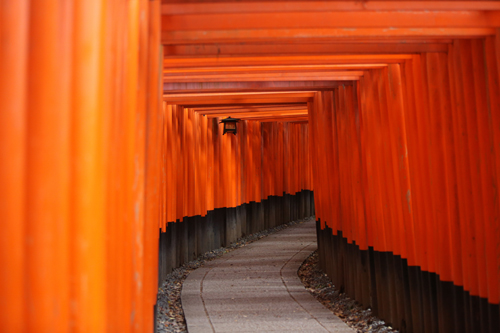
Photo courtesy of Windows to Japan
Followers of Japan’s oldest religion, Shintoism—which started back in 1,000 B.C.E. and is still widely practiced today—believe that spiritual powers exist in the natural world. The Shinto Shrines (of which there are at least 400 of in Kyoto) house Kami, the spirits that are worshipped in the religion.
Fushimi Inari, which is the head shrine of Inari (the spirit of fertility, industry and general prosperity) is known for its tunnels of vermillion-colored torii. These hundreds and hundreds of gates (sponsored by business people desiring success in their work) were the inspiration behind Christo’s Gates Project in New York's Central Park back in 2005.
Calling it a Night
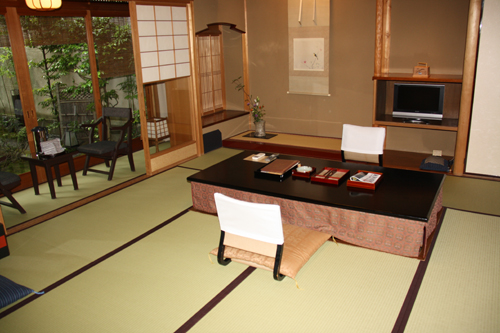
Photo by Susan Farewell
While there are plenty of “Western-style” hotels in Kyoto, to really experience Japanese culture, one should stay in a ryokan, which is a Japanese-style inn. Some of the earliest ryokan were located on the Tokaido Highway which connected the capital city of Edo (Tokyo) and the Imperial Palace in Kyoto.
Some ryokan are very simple, while others are more elaborate. In general though, a typical ryokan guest room has reed floor matting (tatami), low wooden tables with sitting cushions, a futon (with sleeping quilts that get put away in a closet) and an alcove (tokonoma) in which a hanging scroll and a flower arrangement are displayed (both representing the current season).
Pictured here is one of eight guest rooms at Yoshikawa Ryokan, which is in the heart of Kyoto. Step outside the door and you will find yourself in a tranquil garden complete with rock pools with goldfish. This particular ryokan is also known in Kyoto for its kaiseki and tempura.
When we visited, there was a wedding taking place and we were invited to join in the festivities. This is the kind of hospitality you find everywhere in Kyoto. And...it's just another reason why I love this city.
|

